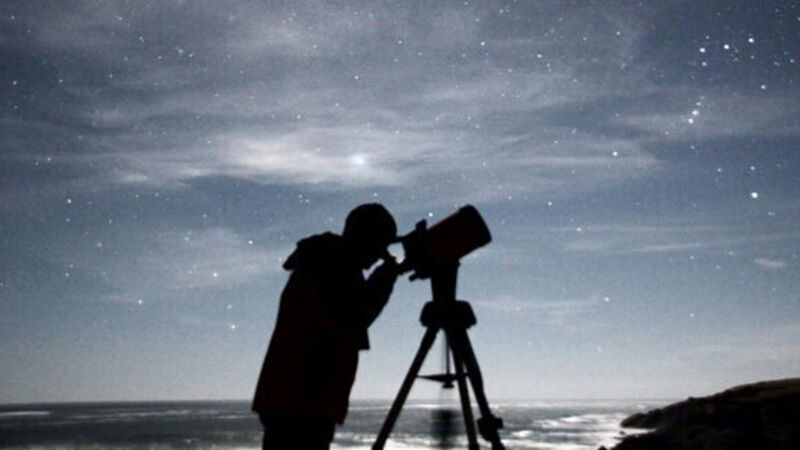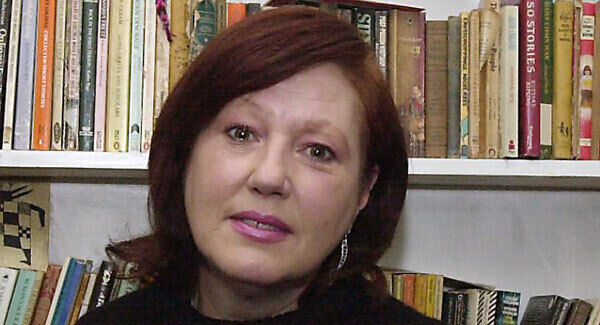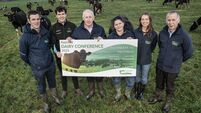Denise Hall: Guarding the right to keep light at bay

I have never been fond of overly-bright lights.
So I wasn’t especially thrilled to receive an assignment in Las Vegas, a place that I knew radiated an extraordinary amount of light for many miles around.
I was living in Los Angeles at the time and went to Vegas with a photographer who, unlike me, had been there many times before. He decided I should see the older part of Vegas, where the amount of of light was unrestricted.
Within about five minutes of driving down what was known as the old strip, I started to feel sick and I was pretty sure it wasn’t the dinner we had just eaten.
The place was ablaze — neon, search lights, klieg lights and every other form of lighting, all performing at an intensity of wattage that was just incredible.

Despite the fact that it was night time, I reached for my sunglasses and asked if we could go back to the newer part of town, which I had thought was hideously illuminated that is, until I saw this electric inferno.
Less than 100 years ago, we could all look up and see a spectacular night sky. Now thousands of children across the globe — particularly those who live near Vegas — will never see the Milky Way where they live. Light pollution has created this issue.
Founded in 1988, the International Dark-Sky Association (IDA) is dedicated to protecting the night skies for present and future generations.
“The blue-dim tapestry of night — spread from horizon to horizon, studded with diamond lights, and embroidered with the golden and silver threads of the Milky Way — has inspired religion, myth, mathematics, and science ever since the first sparks of consciousness ignited in human brains,” Chet Raymo wrote in his splendid book An Intimate Look at the Night Sky.
The Kerry International Dark-Sky Reserve has received recognition from the IDA and is the only Reserve of its kind in the Northern hemisphere. They are all about protecting wildlife, heritage and Ireland’s beautiful night skies and are welcoming visitors from as far afield as Japan and the US.
Volunteer and founder Julie Ormonde wants to protect the quality of the dark night time sky to witness them as our ancestors once did and believes that the economic potential for the whole of the South West Kerry area is considerable.
An IDA approved Dark Sky Reserve has a core/buffer structure, similar to the design of UNESCO Biosphere Reserves. The darkest night skies of such reserves and parks are in the Core Zone.
The Buffer Zone protects the cores dark skies through the enacting of responsible outdoor light policies by municipal councils and private individuals.
In the case of the Kerry International Dark-Sky Reserve there are actually dark-sky areas in the Buffer Zone with equal star-viewing as fund in the Core Zone.
The Kerry Reserve is unique because it is an inhabited “living” reserve where you can visit a pub, rent a house, stay in a Hostel or B &B in the Core Zone area.
The IDA and its associates try to educate the public on economically advantageous lighting alternatives that accomplish the required purpose of business, travel, security aesthetics where light is not wanted or needed.
The association estimates that wasted, upward-directed light costs the United States $1bn a year.
Humankind has always had a fear of darkness and strived to eliminate it from our world. In distant times, our ancestors gathered around the camp fires at night and marvelled at the starlight and the majesty of the night sky, provoking the first spark into the creation of what we now call science.
Julie Ormonde told me of her long love of astronomy.
I was interested since I was a very young child. What really got me going though was the Star Trek programme.
I loved it, couldn’t get enough of it and I knew then that I wanted to be an astronomer. But for a girl in those times, there was very little outlet for the kind of ambition.
I had to teach myself. So I went to the library, where all the books on astronomy were for adults but I somehow managed my way through them. When I was old enough I went to University and studied astronomy.
But then of course, there wasn’t much in the way of work for a young woman with a degree in astronomy and life took over. I had children and began working as a secretary.
That’s right but I always wanted to live in the country. So in 1996, we moved lock, stock and barrel to Waterville. By this time, I had five children and we did find it was hugely different. Eventually we all settled in and we loved it.
There were better opportunities for the kids. And as for me, it was the first time I had seen such starry skies in a long time, so my passion was reignited.
It was back to Star Trek for me and in 2009, I set up the South Kerry Astronomy Group in Tipp. We get together to observe and discuss and I teach some classes locally.
We have our own observatory and telescopes but I love my binoculars. For some of our members, astrophotography is an important part of what we do and some of the results are spectacular.
I really believe this part of south-west Kerry, which is stunning by day and sensational by night and which has the unique distinction of being a rare IDA recognised Reserve, could, with the right support, benefit hugely from the proper development of the Reserve, which contains such iconic locations such as Kells, Valentia, the Skelligs and Valentia Island.
But we need more support from Bord Failte and relevant government departments. At the moment, it’s very much a wasted opportunity. We receive no funding and make no profit.
www.kerrydarksky.com









